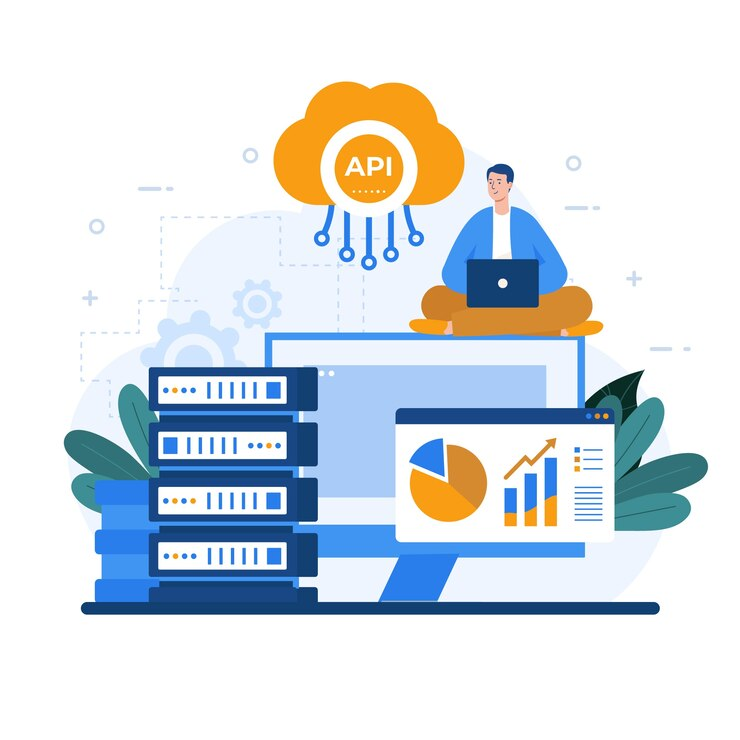DevOps Engineering vs Traditional IT: A Comparative Analysis
It is a set of practices that combines software development (Dev) and IT operations (Ops). Its aim is to enhance collaboration, productivity, deployment frequency and reliability.
Typically, traditional IT organizations have operated in silos with rigid boundaries. Ops only deployed and maintained infrastructure separately from the developers writing all the code. A divide like this caused pain points like blame games and slow releases.
Below, we contrast both approaches across people, process, and technology factors to understand the core differentiators of DevOps:
People & Culture

Collaboration
DevOps preaches breaking down walls between developers and ops staff. The teams share ownership of applications and infrastructure. Devs gain operational awareness while ops teams provide infrastructure-as-code.
Conversely, traditional IT maintained a clear separation between dev and ops. Teams rarely collaborated outside of change approval boards, which caused distrust and tension across groups.
Automation Mindset
With DevOps, engineers constantly look to automate manual tasks. They value getting fast feedback over large batch work. The focus is on creating tooling to reduce human toil.
However, traditional IT teams continue performing tasks manually without seeking automation. Work tends to focus on large project-based efforts rather than continuous improvement.
Blameless Culture
Post-incident analysis in DevOps engineering services aims to improve systems, not affix blame. When issues occur, teams adopt a blameless mindset. The goal is learning over finger-pointing.
Meanwhile, traditional IT organizations tend to highlight individual errors after outages. Blame cultures discourage transparency over problems and reduce morale.
Processes
Infrastructure As Code
DevOps teams manage infrastructure via code using tools like Terraform, Ansible, and CloudFormation. Engineers treat infrastructure as just another application component.
In traditional IT, config changes are made through manual processes. Infrastructure relies on tribal knowledge and human-driven steps, which can cause reliability and compliance issues.
Small Batch Changes
DevOps emphasizes continually making small, incremental changes rather than batched work. Small batches isolate risk and accelerate feedback loops.
Conversely, traditional IT focuses on large, serialized projects like operating system upgrades or data center moves. Big batch work delays value delivery and amplifies risk.
Continuous Delivery
Mature DevOps teams practice continuous delivery (CD) by automating build, test, and deployment pipelines. CD promotes releasing small changes often and reliably.
Meanwhile, legacy IT organizations rely on periodic major releases done quarterly or annually. Large batched updates tend to cause regressions and reliability issues upon launch.
Technology
Cloud & API-Driven
DevOps architectures extensively leverage cloud platforms like AWS that provide infrastructure via APIs. Services can scale dynamically through code.
In contrast, traditional IT often centers on static on-premise hardware like bare metal servers. Capacity changes follow manual procurement and change control processes.
Infrastructure As Code
As I mentioned above, DevOps teams codify infrastructure configuration into version control and peer review. Terraform and CloudFormation are tools that help manage cloud resources as code.
GUI-based changes and tribal knowledge are the ways to configure hardware in legacy IT. Without documentation, ad hoc changes are lost when teams scramble during outages.
Observability & Monitoring
Production observability is achieved in DevOps environments by extensive monitoring, logging and tracing. Issues are detected very quickly, and the teams monitor service health.
Traditional IT monitoring is overwhelmingly focused on infrastructure metrics such as server CPU usage. Without holistic observability practices, application-level insights remain limited.
Automated Testing
Automated test suites are a central DevOps practice for unit, integration and end to end testing. New tests run on every code commit to find regressions.
Conversely, testing in traditional IT depends largely on time-intensive manual validation. Automated regression testing rarely supplements manual user acceptance testing.
Key Differences At A Glance
| Factor | DevOps | Traditional IT |
| Collaboration | Cross-functional teams | Strict separation between teams |
| Mindset | Automation-focused | Manual processes |
| Blame Culture | Blameless | Finger-pointing during incidents |
| Change Approach | Small frequent batches | Large serialized releases |
| Infrastructure | Cloud, APIs, IaC | On-premise hardware, manual config |
| Monitoring | Holistic observability | Limited visibility |
| Testing | Extensive automated testing | Manual user testing |
Making The Shift From Traditional IT

Transitioning from legacy IT practices to DevOps represents a multi-year culture change initiative. Based on industry surveys, over 75% of DevOps transformations fail in the first year.
Driving an effective shift requires executive sponsorship, grassroots evangelism, and, most importantly, patience.
Below, we explore some leading recommendations for adopting DevOps successfully:
Take An Iterative Approach
No organization can change overnight, and Rome wasn’t built in a day. First, work down the list of smaller projects and start with something you can win quickly. Initially, pick low-risk applications rather than mission-critical systems.
Focus On Cross-Team Collaboration
Instead, let ops staff join the developer standups and planning sessions. Make collaboration and empathy core values. Showcase teams that are effective at information sharing.
Start Small With Automation
Repeat the manual process so that it can be automated for you, such as server builds, config changes, and testing harnesses. Ansible, Jenkins, and Selenium can help us here. Automation wins that are small and help build confidence.
Standardize Environments With IaC
Write infrastructure as code, i.e., version control and standardize dev, test and production environments. It improves reliability and change management.
Instrument For Observability
Add logging, metrics, and tracing to gain insights into app health, usage, and errors. Open-source tools like Prometheus and Jaeger enable robust monitoring.
Build A Blameless Culture
Analyze failures in a blameless manner focused on systemic improvement. Reward transparent failure reporting and reinforce that human error is normal.
Hire Staff With Automation Skills
Supplement existing staff skills with cultural change management and automation capabilities, such as IaC expertise. New hires can catalyze transformation.
Key Takeaways
While traditional and DevOps IT models both aim to deliver business value; their mechanisms differ enormously based on people, process, and technology perspectives.
Transitioning from legacy IT to DevOps requires iterative, multi-year efforts focused on culture change, automation skills, and instilling blameless mindsets.
Organizations that transform successfully stand to gain huge benefits in reliability, productivity, and deployment velocities from adopting DevOps. The journey isn’t easy but pays immense dividends in the long term.

